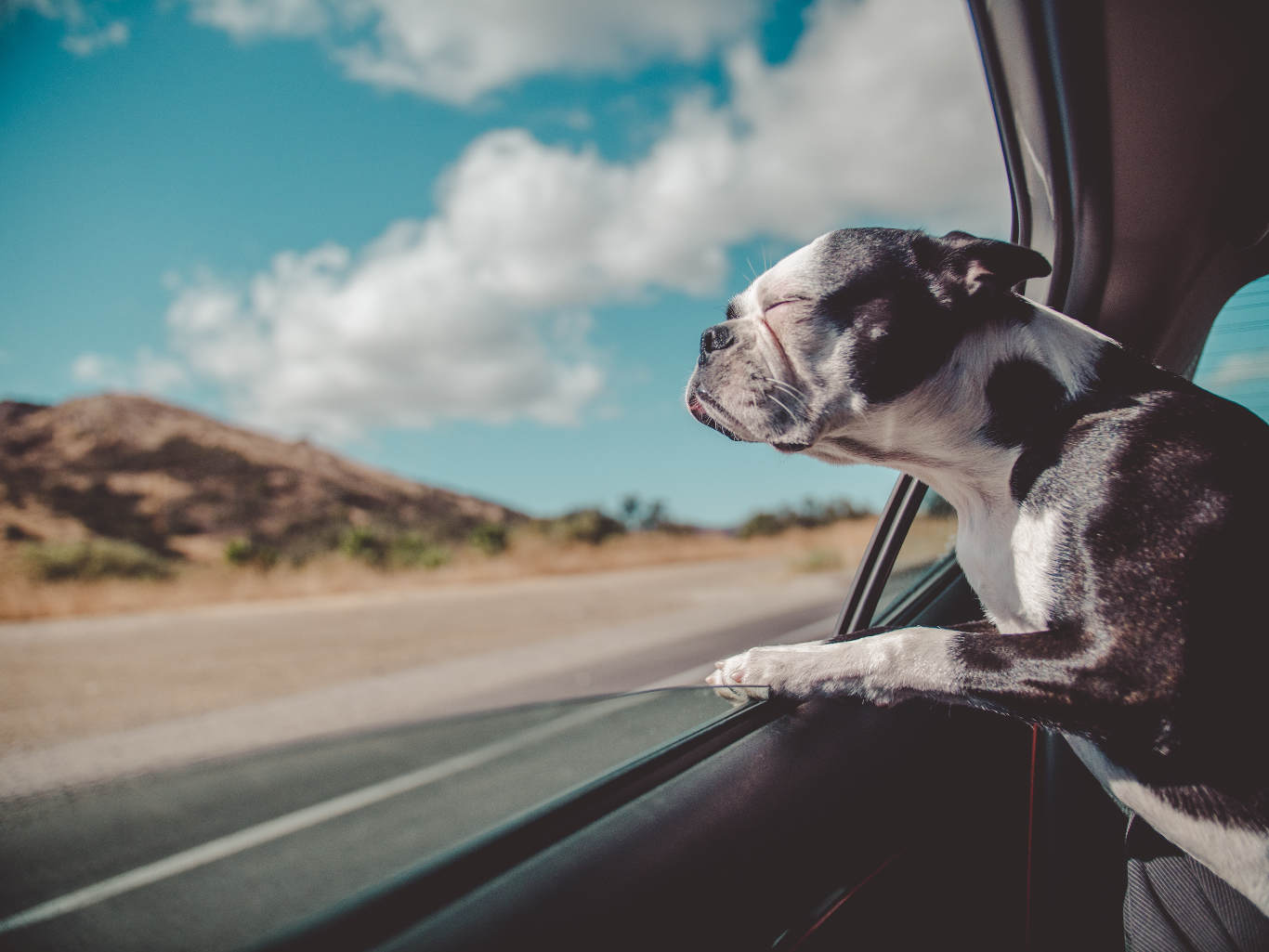
Hot Car Child Safety Tips to Keep Your Family Safe
Ontario sees its share of sweltering summer temperatures. If you have young children or pets, it's important to understand just how hot the inside of a vehicle can get. Tragically, every summer seems to bring stories of accidents involving kids and pets in hot cars. Ensure you, your children and your pets avoid the heat hazards, with these 11 hot car safety tips.
-
Your car can be dangerously hot, even when the weather is cool.
Just because it’s windbreaker weather doesn’t mean it’s safe to leave your child inside. Cars can get excessively hot in much cooler conditions than most people realize and can reach dangerous temperatures in mere minutes.
An air-conditioned car in the sun will heat from 21.1°C(70°F), to 35.6°C (96°F) in just fifteen minutes according to NoHeatstroke.org, a site run by Jan Null, CCM, a Professor at the Department of Meteorology and Climate Science at San Jose State University.
Temperatures can increase 10.6°C (19°F) in the first ten minutes alone — a large enough increase to be dangerous on hot days. Even if you’re just running into the store, don’t risk your child’s safety in a hot car.
-
Understand the risks children face.
Anyone can overheat in hot weather, but children are at greater risk for a variety of reasons. According to Boston Children’s Hospital, children sweat less, and their bodies produce proportionally more heat than adults.
Additionally, children have poor self-monitoring skills compared to adults. They’re prone to drinking less water on hot days and resting less after strenuous activities. That means if you pick your kid up after a play date during a heatwave, they could be overheated and dehydrated even before they get in the hot car. On a sweltering summer drive, with the sun beating down on them, all that heat stress can add up.
Consider using a shaded car seat to protect young children from the sun — particularly on long car trips where children can be exposed to a lot of direct sunlight. You also should make sure your kids are drinking plenty of water. The amount of water kids need varies with age from about 2-4 cups for toddlers to between 8 and 11 for children 14 and older, but in hot weather they may need more.
-
Know the signs and symptoms of overheating.
According to the Mayo Clinic, if your child is faint, dizzy or fatigued, has a headache or muscle cramps, or has “cool, moist skin with goosebumps when in the heat,” they may be suffering from heat exhaustion. Other symptoms include nausea, and a rapid, weak pulse. If left unchecked, heat exhaustion can proceed to heat stroke, which is potentially life-threatening.
Even if you don’t think your child is seriously overheated, it’s best not to take any chances. Immediately move them to a cooler location, let them rest and give them something cold to drink.
-
Don’t assume you can’t forget your child.
No one wants to believe they could accidentally leave their child in a hot car, but it’s easier than you think. On a busy day during a heat wave, you’re not going to be at your best — particularly if you have young children keeping you up all night. Add in heavy traffic, job and family stress, and a long list of errands to remember, and even a good parent like you could be at risk — particularly if your child is quiet or asleep.
Fortunately, there are plenty of ways to remind yourself. We’ve seen dozens of different hot car safety tips and tools for remembering your child, but they break down into two basic groups: low tech hacks and high-tech gadgets. The low-tech options include:
- Placing your bag, wallet or something else you need in the backseat or behind your child’s car seat, so that you have to open the back door (and notice your child) to get it before you leave the car.
- Seating your child behind the passenger seat, where they’re easier to see out of your peripheral vision.
- Taping a reminder, in big, bold letters to your dashboard.
- Putting something that reminds you of your child, such as a favorite stuffed animal, in the passenger’s seat when you’re driving with them.
There are also a number of high tech tools you can use to make sure your child stays safe in hot weather. Beginning in 2017, GMC started installing including the Rear Seat Reminder system in several models, providing built in child protection that’s invaluable in hot weather.
The system monitors the rear doors, and activates if they’re opened while the car is running, or up to 10 minutes before. The next time you turn off the engine, the system chimes and flashes the message, “Rear Seat Reminder / Look in Rear Seat,” providing a handy reminder before you leave the car.
There are also many seat alarms available on the market. Baby Alert International sells two excellent systems for young kids. The ChildMinder SoftClip® System is a clip that installs on your child’s shoulder harness. If you move more than 15 feet away from the seat once the child has been strapped in, it sounds an 8 second alarm, through a key fob you carry. The company also offers the ElitePad® System, which uses a pressure pad that fits under the car seat cushion to provide the same monitoring.
If you prefer a system that integrates with your smartphone, Sense A Life is a great option. This device monitors both the driver and passenger seats, so it can detect when either of you gets out. It includes both a main speaker, which alerts you immediately to remove your child from their seat, and an app which provides two further warnings.
-
Forgetting your child isn’t the only hot car safety hazard.
Nearly one in three hot car deaths occur when a child accidentally locks themselves inside. An impromptu game of hide and seek, an ill-conceived prank or just curiosity could lead your child or their friend to climb into your car and get trapped. Always check your car and lock the door after you leave, and make sure your child does not have access to the keys.

Hot Car Dog Safety Tips
Every parent knows the fear of forgetting your child in the car — but less people worry about leaving their pets in the car. Many people think that simply cracking your window is enough — but it often isn’t. Likewise, while a child locked in a car on a hot day might attract attention, many people will ignore a dog, believing it to be safe (even when it isn’t). Here’s what you can do to keep your pup safe:
-
Understand how dogs overheat.
Humans are better at getting rid of excess heat than dogs are. Dogs don’t sweat from their whole bodies like people do (although they do sweat through the pads of their feet) — they primarily cool themselves through their mouths by panting.
Dogs left in hot cars can overheat very quickly, particularly on humid days, leading to possible heat stroke and death. And while you can wear shorts and a t-shirt on a hot day, a husky can’t take off its heavy fur. Never leave dogs in hot cars, no matter how short your stop.
-
Recognize if your dog is overheating.
According to the Humane Society, signs of heatstroke include, “heavy panting, glazed eyes, a rapid heartbeat, difficulty breathing, excessive thirst, lethargy, fever, dizziness, lack of coordination, profuse salivation, vomiting, a deep red or purple tongue, seizure and unconsciousness.”
If your dog has any of these symptoms, get them in the shade or air conditioning, give them water and cool them with ice packs, if available — and call your vet.
-
Leave your dog at home or with a pet sitter.
While you can take your kid pretty much anywhere you need to go, you may not be able to take your dog.
Although tying them in the shade outside may be an option, this can still cause heat stress, and may not be safe in some areas. Your dog will be happier (and safer) with a pet sitter or friend, or sitting at home in your air conditioned house.
-
Consider how other activities can compound hot car dog safety hazards.
Many dog owners love taking a daily jog with their furry companions, but in the heat your normal run can exhaust your dog, leaving them more vulnerable to the stress of a hot car.
Your dog may need more water and rest and shorter exercise activities in summer weather. If your best friend has had an active day, give them a few extra minutes in the shade while the car cools down.
-
Give your dog cooling treats.
The Humane Society has a great recipe for dog popsicles you can make with just unsweetened peanut butter, banana and water. These treats will help your dog cool down and give them energy to beat the heat. Don’t forget to bring a dog bowl, and a thermos of cold water to keep both of you cool.
The summer is a great time for adventures with your whole family. Take hot car safety seriously and ensure that hot days don’t put your children and pets in danger.
